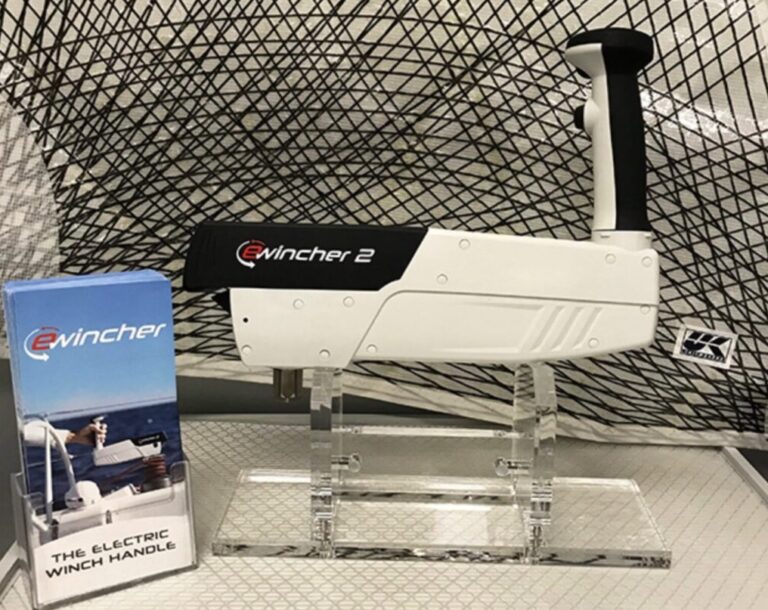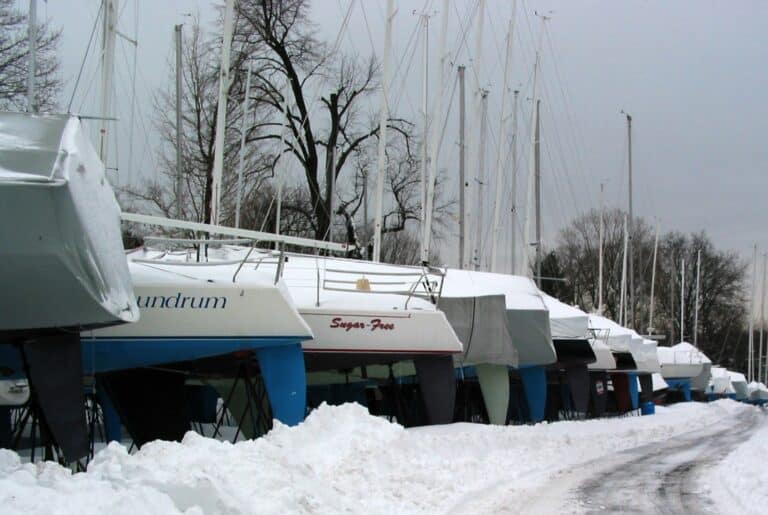PROFESSIONAL HEAVY WEATHER SAILING TIPS FROM PAUL EXNER
When the breeze fills-in, waves build-up to create a lumpy sea-surface that often impedes a boat’s upwind progress, especially when true wind blows 25-40 knots across open water.
To sail efficiently in heavy weather and maintain any heading between close-hauled to beam- reach is hard-going for sailors driving through steep, thick waves that resist a boat’s forward headway. In fact, it’s nearly impossible to hold a close-hauled point of sail in True Wind of 35+ knots due to wave resistance and wind drag.
For the record, I coach offshore-sailing in Hawaii 150+ days per year, including my Heavy Weather Training across the Alenuihaha Channel, a treacherous 45-mile swath of ocean between Maui and Big Island where I repeatedly fly a Storm Trysail because Gale-driven circumstances demand it. Here are some of my tips for powering-up your boat and sailing into big waves in heavy air.
TIP 1 – SUSTAIN MOMENTUM
Do everything possible to drive the hull with enough sail-power to maintain a high-average boat speed whereby hydrodynamic acceleration becomes the throttle. We need a high-torque response from the underwater appendages that only comes from sustaining our momentum through the water. This helps the boat hold it’s heading toward the waypoint and heightens the helm’s responsiveness to tweaks that maintain a balanced groove between sails and hull.

TIP 2 – BOAT SPEED IS KING / HIGH APPARENT WIND IS NOT
Because more apparent wind builds sail-power quadratically it’s usually the case that excess apparent wind will drive the hull TOO hard in heavy wind; that being said, the quickest way to accelerate a slow-boat is to nab more apparent wind as needed. So, if your boat speed in heavy air is reasonably good, don’t seek a higher pointing angle as that would create excessive apparent wind. Its best to keep the hull moving fast to preserve your momentum.
Without consistent boat speed there’s insufficient momentum to overcome wave resistance, and this rapidly worsens a boat’s performance because:
- The hull is more apt to respond multidimensionally to waves throwing it around, and
- Water flow over the hull, keel, and rudder become turbulent which stalls a boat’s hydro-dynamic parameters causing a loss of directional control which in-turn dampens the potential for acceleration.

TIP 3 – LESS SAIL AREA IS MORE EFFICIENT
Heavy Weather is puffy – especially when extreme conditions prevail. If its a heavy day and blowing 30 knots it’s likely that long-blasts of 40 are probable. So, less sail area, assuming the boat still has enough power to drive into a heavy sea state in the lulls, will produce a more responsive and accelerative state for the hull.
Human nature errs to fly too much sail; So, I’ll save you decades of trial-and-error and affirm that it’s ok to set a little less sail area than you think is necessary in heavy winds. Next, optimize every air-molecule flowing over your sails to sustain momentum – seek momentum! Capitalize on the benefits of all tips above and get the boat moving well in the groove – it’s during this span of time when LESS SAIL AREA will contribute the appropriate power to the balanced equation of aero/hydro-lift equilibrium because:
- Peak momentum is achieved to carry you through the waves, and
- Optimal-average apparent wind is dialed-in so less sail-area is highly tuned for max boat speed, propelling and maintaining the boat in her groove.
TIP 4 – SLIGHTLY MORE SAIL POWER IS ACCEPTABLE
After a well-designed sail leaves the loft, sailors tweak it on the water; remember your primary controls are: sheeting angle, area, and the amount of apparent wind you coax into the balanced equation. It’s at this point when sailing in heavy weather that we should sheet a little harder, or close sail-twist a smidge to keep the hull just short of being over-powered. Bear in mind that ALL Tips above must be satisfied before applying this final touch of power. Basically, this extra edge applies what’s needed to overcome wave resistance – ease any excess power quickly if it suddenly becomes too much.
Paul Exner Pro-Sailing Tips are written exclusively for sailors flying sails by UK Sailmakers, who are seeking an extra edge needed to sail with confidence. I’ll see you here in the next UK Newsletter when I dive-deep into another topic that helps you get the most from your UK Sails!
Sail with me in heavy weather and apply these tips in real-time; email me personally at paul@moderngeographic.com and check out my upcoming Heavy Weather Mastermind Course through my company, Modern Geographic.








What are your recommendations on sailing through big waves, when the boat takes off at the crest and slams down in the trough?
Sometime I come up on the wave face and then bear away in the trough but after 2 or 3 waves the boats motion is horrendous and I revert to slamming through.
Thanks, Steve